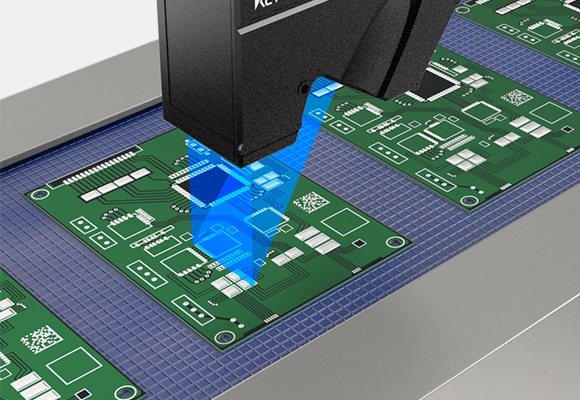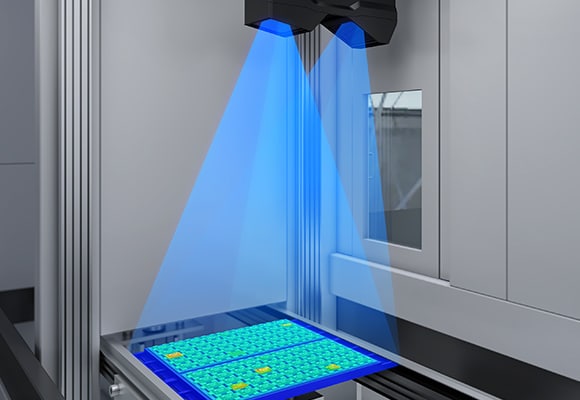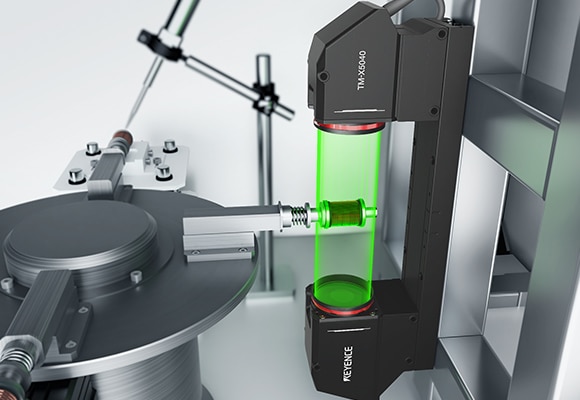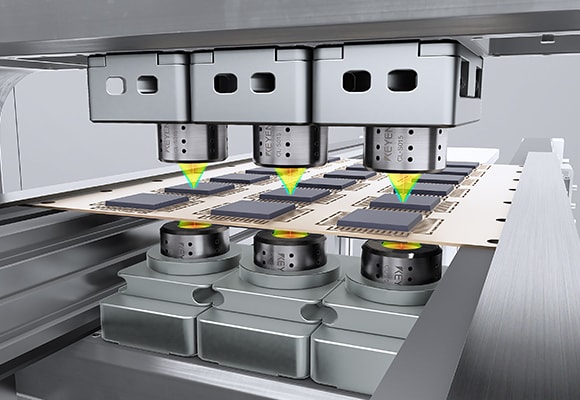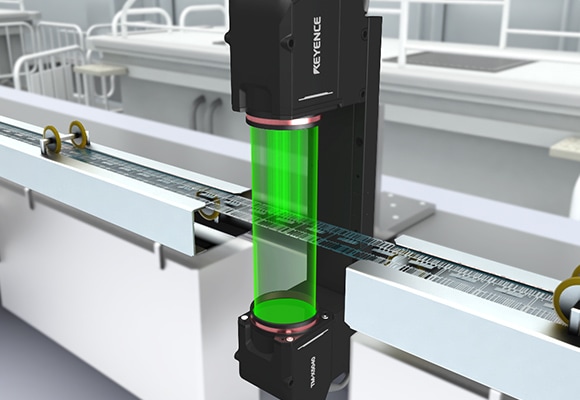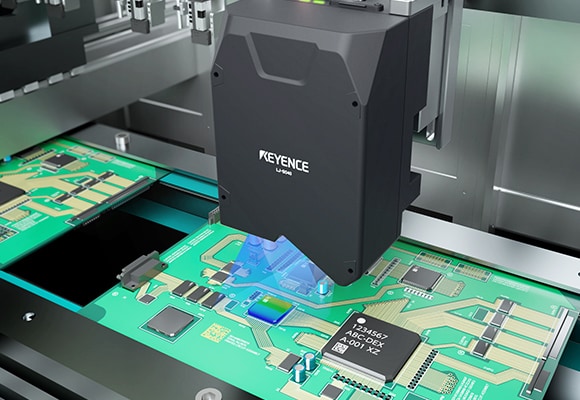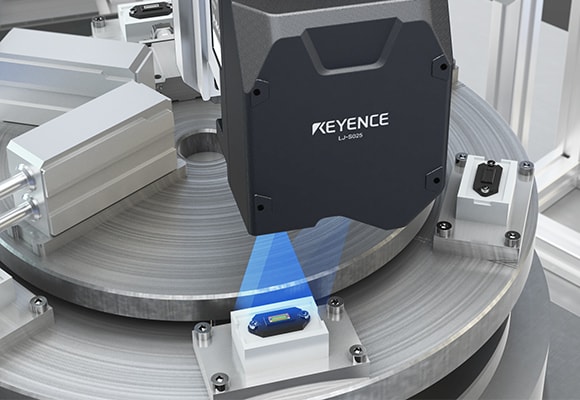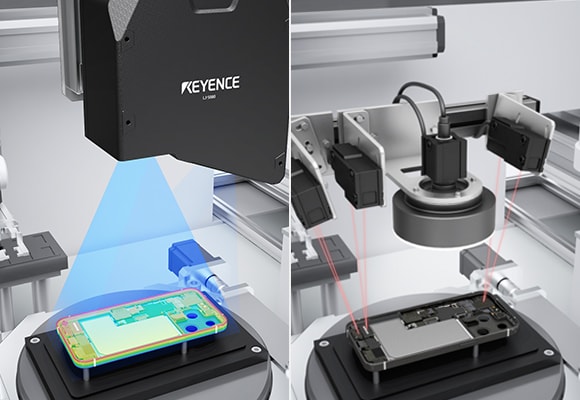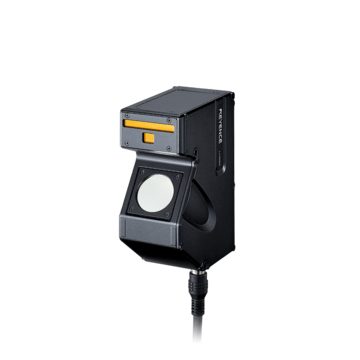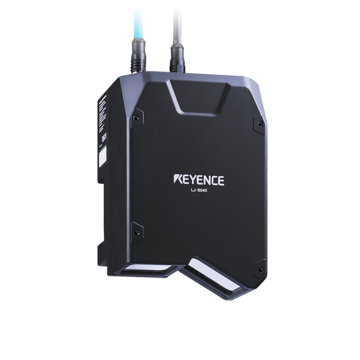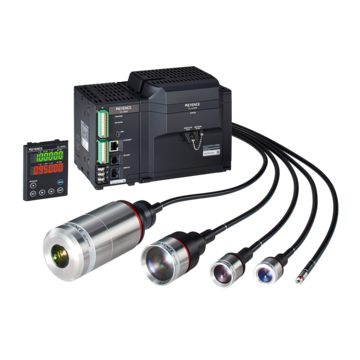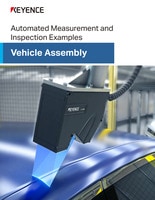Measurement Sensors
Dimension Measurement
Displacement Measurement
Measurement Sensors for the Electronics Systems Industry
The demand for better, faster, and smaller electronics continues to rise as customers become more reliant on connected devices. KEYENCE sensors provide solutions for inline inspection and measurement that are accurate and fast enough to keep pace with the ever-evolving electronics industry. Below, we take a closer look at some of these applications and how KEYENCE's measurement sensors can contribute to the success of the electronic production process.
Get detailed information on our products by downloading our catalog.
View Catalog

Importance of Precision Measurements in the Consumer Electronics Industry
The electronics industry’s massive development since the invention of the transistor shrunk many components in size while increasing their effectiveness. This gave birth to several new branches with the word “micro” in their name, including micro components in various electronic systems.
These components are incredibly small (some smaller than a poppy seed), and in the electronics industry, they’re mostly handled and inspected by robots. These robots rely on numerous sensors to ensure every component is in the right spot. Such components are usually placed onto boards by pick-and-place robots that arrange and align them onto pads at fantastic speeds, often multiple at a time.
After placing components, machines use precision measurement sensors to check for possible misalignments. This takes place before the components go to soldering and ensures that everything is positioned correctly.
Correct position and orientation of components and defective component detection are crucial, as they ensure the quality of the electronic system and increase the effectiveness of the entire process by eliminating human operators, who are more prone to error.
We’re here to provide you with more details.
Reach out today!

Solder Paste Application
Check for volume and even distribution of solder paste on PCB inline. Multiple areas can be inspected simultaneously from the 3D image.
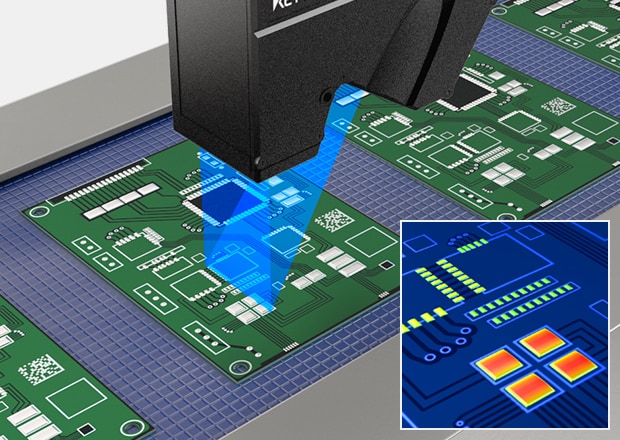
IC Chip Seating, Orientation, and Ocr Inspection
The LJ-S8000 Series scans the surface of the target to examine in-plane height and intensity data simultaneously. Height data can be used to inspect IC lift, overlap, and omission, as well as front/back and orientation detection.
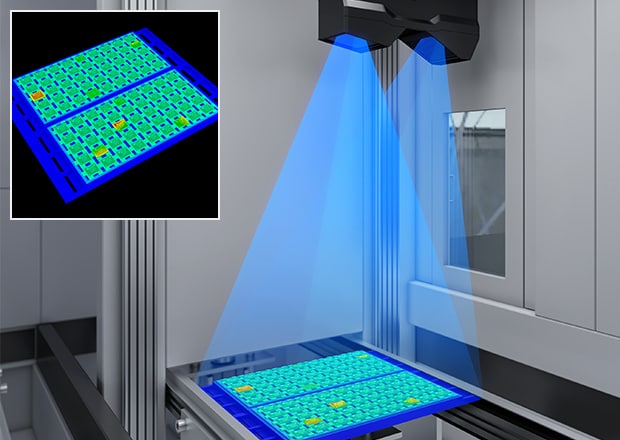
Coil Winding Unevenness Detection
A combination of tools, including point and straight line tools, can be used to measure protrusions on the coil. Setting the tolerance for these measurements makes it possible to determine whether the target is defective.
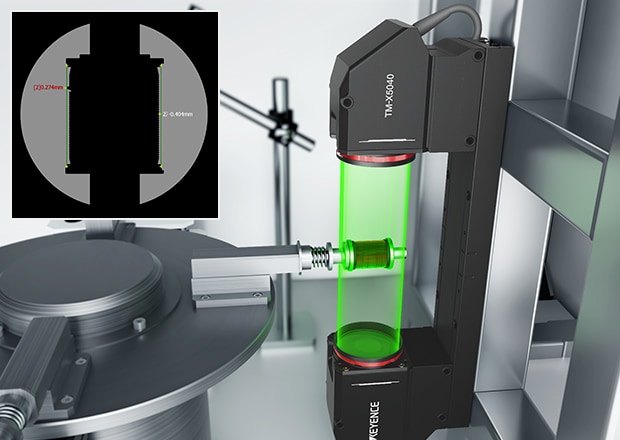
Molded Thickness Measurement Wafer Cassette
The CL-3000 Series uses the multi-color confocal method of measurement, which enables stable inline thickness measurement of molded sections, from metallic to black surfaces.
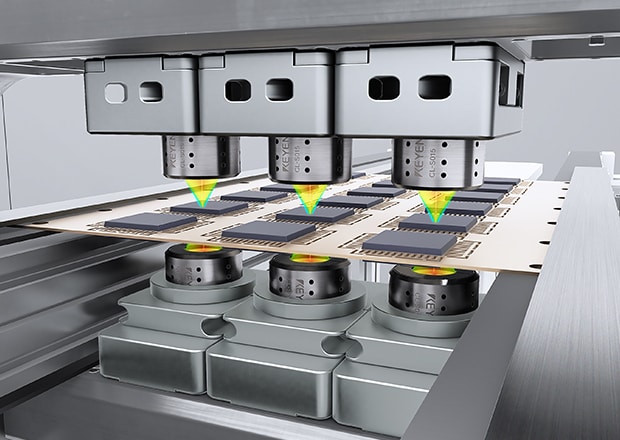
Measurement and Inspection of Lead Frames
Multiple dimensions and inspections can be completed simultaneously, enabling reliable defect detection of lead frames with complex shapes.
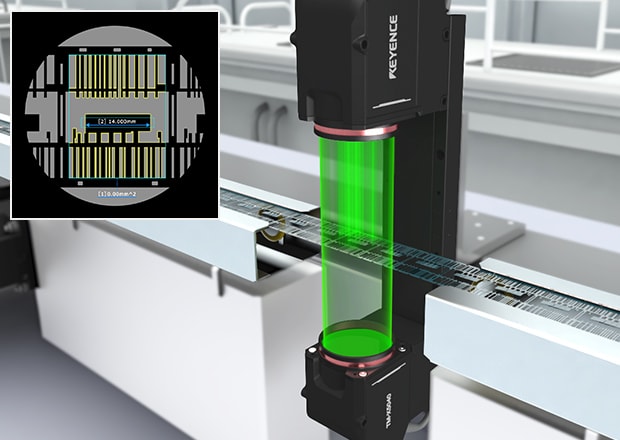
Packaged Component Height and Seating Inspection
Ensuring that components are seated correctly is key in electronics assembly. A tilted part or a part at the incorrect head could cause any number of issues down the line or even with the finished product. Easily check seating, height, flatness, and more with our 3D Laser Snapshot Sensors.
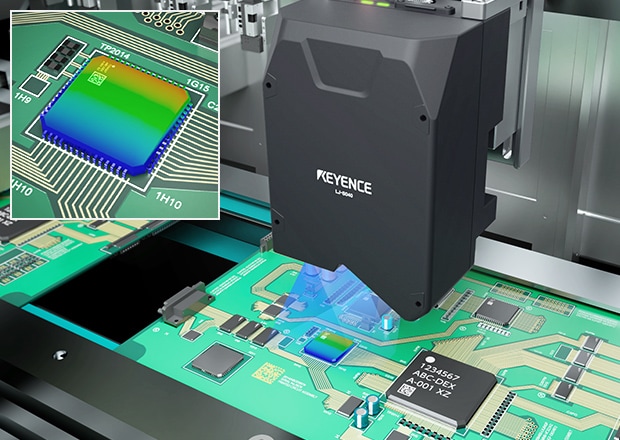
Connector Coplanarity Inspection
Image based inspection required precise positioning and lighting to measure the pins whereas LJ-S8000 Series measures based on 3D height data.
Sensitivity is automatically adjusted according to the color and gloss of connectors, which allows for stable inline inspection.
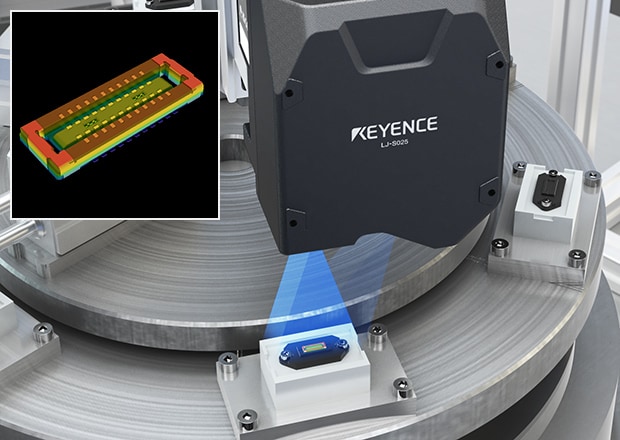
Space-Saving Design for Inline Inspection (Smartphone Component Assembly Inspection)
The LJ-S8000 Series 3D Laser Snapshot Sensor can inspect the position and height of components mounted on a smartphone chassis. With the LJ-S8000 Series, inspections requiring multiple displacement sensors, cameras, and other equipment can be completed with just a single device. The ability to handle inspections that previously required multiple inspection methods increases overall efficiency and decreases complexity for quality checks.
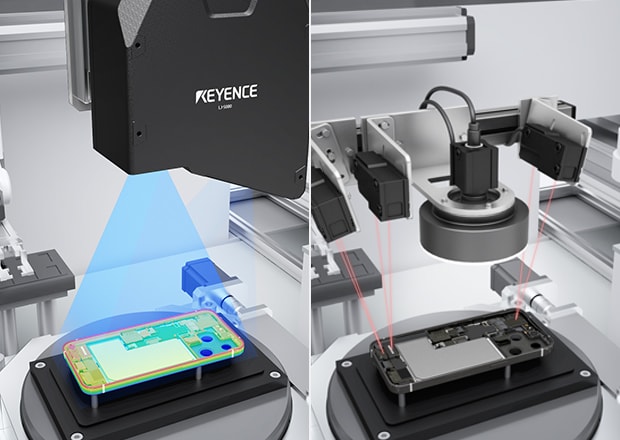
The Role of Laser Snapshot Sensors in the Electronics Systems Industry
3D snapshot sensors for electronic industry applications help with quality control and productivity. Especially as printed circuit boards (PCBs) are getting smaller and their development cycles become increasingly shorter, inspection devices such as 3D laser snapshot sensors enable manufacturers to inspect these boards for defects and irregularities so electronics on the board can fulfill performance requirements.
We’re here to provide you with more details.
Reach out today!

How 3D Snapshot Sensors Improve Electronics Industry Applications
3D snapshot sensors can easily integrate with robots for different automation needs. Instead of relying on human labor or inefficient traditional systems, industrial snapshot sensors provide fast and efficient solutions. These sensors are a key type of measurement sensors that help ensure quality control in modern manufacturing environments.
As a laser-based system, 3D snapshot sensors offer advantages similar to vision systems but with an added dimension of depth, increasing the accuracy of surface inspections.
In PCB quality control, the sensors are mounted in such a way that they can measure the boards from above. Their ability to measure different materials, including plastic and metals, also makes them usable for the inspections of integrated components.
Electronic Component Inspection
Bigger components, such as ICs and various chips with SON and TSOP footprints, might get misaligned during pickup and placement. In order to avoid product failure due to misalignment, the electronics industry frequently relies on 2D laser profilers such as the LJ-X8000 Series to detect misalignment and trigger a warning or other appropriate automated action.
Electronic Component Assembly Inspection
Once the components are positioned and checked for alignment, they are transferred to the reflow oven, where the solder is melted. This crucial step requires that all components on the electronic system board are precisely aligned.
After the solder finishes melting, component alignment and the quality of the solder joints are checked using 2D/3D laser profilers once again. Their single-digit µm accuracy allows them to detect misaligned components or cracks in solder joints, which are most likely to expand and lose connection once the electronic system heats up during operation.
This type of inspection typically relies on sensors like the aforementioned LJ-X8000 Series laser profiler paired with a data logger. This allows for accurate measurement and data storage, resulting in more effective quality control.
Discover more about this product.
Click here to book your demo.

Types of Measurement Sensors for the Consumer Electronics Industry
As previously explained, the electronics industry relies on several different measurement sensors. Measurement sensors are used to inspect component placement and solder quality, with defect detection at an enviable µm scale. Laser displacement sensors are particularly useful in automated assemblies as they also ensure precise component placement.
Applications and Examples
Integrating Measurement Sensors into Consumer Electronics Inspection Processes
If you want to learn more about precision measurement in electronics or how to increase the effectiveness of your manufacturing process while simultaneously cutting down on various costs associated with revisions and downtime, ask KEYENCE. Our trained and professional staff will respond to any inquiries you might have.
Optimize Your Electronics Systems with Precision Measurement Using KEYENCE LJ-S8000 Series
Use any of KEYENCE’s snapshot sensor products in the LJ-S8000 Series for advanced in-line application needs. The LJ-S8000 Series has a first-of-its-kind motor-driven scanning detection design. Its built-in scanning mechanism coupled with an internal laser lighting source means zero need for lensing, external lighting, a moving stage, or an encoder.
By just installing the product, manufacturers can perform dimension, appearance, shape, and other types of inspections. An image capturing speed of 0.2 seconds and repeatability of 0.3 µm means high inspection speeds and precision measurements.
For more information about our laser snapshot sensors for the electronic systems industry, contact us today.
Contact us to learn more about how our advanced technology can help take your business to the next level.
Contact Us
Related Downloads
Applications
Dimension Measurement
- Thickness and Width Measurement
- Step Height Measurement
- Inner and Outer Diameter Measurement
- Measuring Angles
- Meandering/Edge Measurement
Displacement Measurement
- Positioning and Stroke Length Measurement
- Vibration and Runout Measurement
- Deflection Measurement
- Measuring Eccentricity

